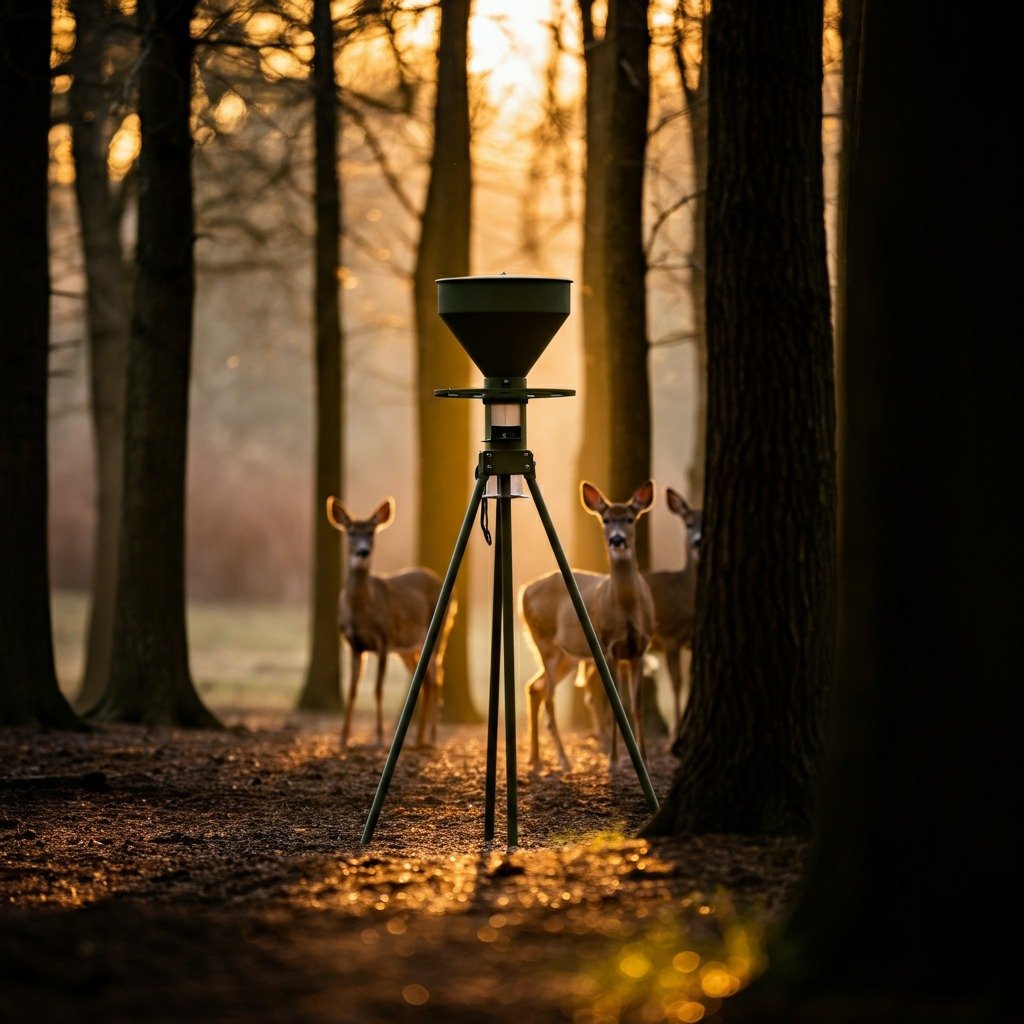Are you looking for the best way to attract deer to your property for hunting, wildlife observation, or conservation purposes? Investing in a deer feeder can be a game-changer. Deer feeders help ensure a steady food supply for deer while enhancing your land’s appeal for wildlife. This comprehensive guide will introduce you to the types of deer feeders, key features to consider, and provide insights to help you choose the best deer feeder for your needs.
What is a Deer Feeder and Why Is It Important?
A deer feeder is a device designed to dispense feed for deer in a controlled and efficient manner. It helps landowners, hunters, and wildlife enthusiasts create a consistent feeding zone, attract game, and promote healthier herds. Whether you’re an experienced hunter or enjoy observing wildlife, a high-quality feeder can simplify the process and improve results.
Types of Deer Feeders
When choosing the best deer feeder, it’s essential to understand the different types available. Here are the three most common types of feeders:
1. Gravity Feeders
Gravity feeders use a simple design where feed is dispensed naturally through a chute or hopper system as deer eat.
- Pros: Affordable, low maintenance, and easy to use.
- Cons: Lack controls over feeding times and exposure to weather.
2. Automatic Feeders
Automatic deer feeders disperse feed at specific times set by a digital or analog timer. They often include legs for elevation and motorized spin plates.
- Pros: Offers precise feeding control, minimizing waste.
- Cons: Requires batteries or solar power.
3. Hanging Feeders
Hanging feeders are suspended from trees or poles, providing a space-saving solution.
- Pros: Ideal for smaller areas and often predator-proof.
- Cons: Limited capacity compared to larger tripod feeders.
Key Factors to Consider
1. Capacity
Think about how often you’d like to refill the feeder. Large-capacity feeders, like the Moultrie 30-Gallon Deer Feeder, can hold up to 200 lbs of feed, reducing the need for frequent refilling.
2. Timer Settings
An automatic feeder with a programmable timer, such as the Moultrie feeder’s digital timer allowing up to 10 feeding times per day, ensures you attract deer at ideal times.
3. Durability
Opt for weather-resistant materials like heavy-duty polymers or UV-proof plastics. For instance, the Moultrie feeder is built with durable polymer and features a metal spin plate.
4. Ease of Maintenance
Choose feeders with easy-to-remove parts and accessible hoppers to simplify cleaning and maintenance.
5. Power Source
Many feeders like the Moultrie use a 6V battery, with some offering solar panel compatibility for better sustainability.
Best Locations to Place a Deer Feeder
Proper placement is critical to maximizing your feeder’s effectiveness. Here are some tips for optimal placement:
- Secluded Areas: Place your feeder in a quiet, low-traffic spot to avoid spooking deer.
- Near Cover: Set up the feeder near tree lines or brush so deer feel protected while feeding.
- Access to Water: Position feeders near water sources to create a complete habitat for wildlife.
- Trail Cameras: Use trail cameras near the feeder to monitor deer activity.
DIY Deer Feeders vs. Buying Pre-Made Feeders
DIY Feeders
Creating a DIY feeder can save money, but they often require more time and effort to build and maintain. They may also lack features like programmable timers and spin plates.
Pre-Made Feeders
Pre-made feeders, like the Moultrie 30-Gallon Deer Feeder, come with tried-and-tested designs for reliability and convenience. While they may cost more upfront, they provide advanced features and durability, making them a worthwhile investment.
Legal Considerations
Before setting up your deer feeder, familiarize yourself with your local wildlife and hunting regulations. Some areas may restrict the use of feeders during certain seasons or impose rules on feeding methods.
Our Top Recommendation
If versatility, ease of use, and durability are essential to you, the Moultrie 30-Gallon Deer Feeder is an excellent choice. Highlights include:
- 200 lbs Feed Capacity
- Digital Timer with 1-60 Second Program Intervals
- Pro Classic II Feeder Kit (includes plastic spin plate, feed-level estimator, ABS housing)
- Durable Polymer Build
With its quick-lock hopper and reliable design, this feeder is ideal for both seasoned hunters and new wildlife enthusiasts.
If you’re ready to elevate your wildlife management experience, check out the Moultrie 30-Gallon Deer Feeder here.
Wrapping Up
A high-quality deer feeder can make a notable difference in your hunting and wildlife observation efforts, ensuring healthier deer populations and improved outdoor experiences. Whether you prefer automated features or a gravity-based design, taking the time to choose the right feeder will result in better results.
Happy feeding, and don’t forget to share your stories from the field!

